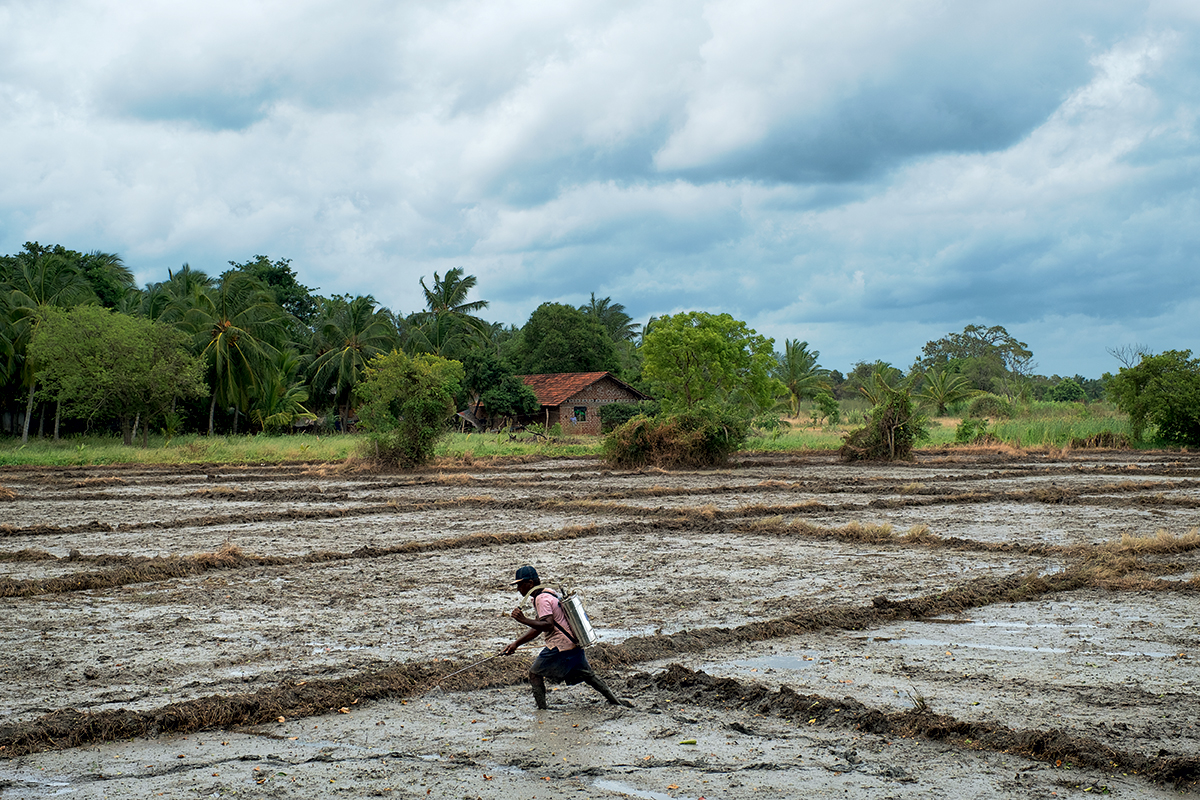Re: As kidney disease kills thousands across continents, scientists scramble for answers
Go and read this whole article, extracts below. For referenced research paper, see March 18th post above. - Ro
Sri Lanka: Stop Hoodwinking The Public Over Kidney Disease
February 10, 2014 | Filed under: Colombo Telegraph,Opinion | Posted by: COLOMBO_TELEGRAPH
By Amarasiri de Silva -
...
In 2011, the prevalence of CKDu in the affected districts in Sri Lanka was about 2?3% of the population aged over 18(Chandrajith et al 2011). This had increased to 15.3% in 2012 when the WHO conducted its study in the three districts of Badulla, Polonnaruwa and Anuradhapura. This would suggest that, taking Anuradhapura alone with a total population of 856,232 (Census and Statistics 2011), the CKDu positive population has increased from around 20,000 in 2011 to over 130,000 in 2012 a more than sixfold increase over one year. If the incidence of the disease as determined by eminent scientists is accepted, then this not only points to an astonishing increase in the CKDu patient population in the affected districts over one year, but also suggests a phenomenon which can be regarded as a disaster; particularly so when the scientists convincingly show that the disease is spreading into other districts as well and the death toll due to the disease surpasses that in the recent secessionist war. In a recent study Bandarage (2013) states that ?Between 1990 and 2007, hospital admissions due to all diseases of the genitourinary system in Sri Lanka doubled with hospital deaths due to such diseases rising from 2.6 to 9.1 per 100,000 people?. So far, in Anuradhapura, informal statistics suggest that the total number of confirmed CKDu patients is around 20,000. Dr. Weeraratne?s feature in Island (6 January, 2014) shows that the number of CKDu patients registered at MOH offices in CKDu endemic areas could be as high as 25,000. This indicates that there is a large hidden population with CKDu. The annual figure of deaths recorded due to CKDu is as high as 1,400 in the country (Athureliya et al 2009). Close to 5% of the country?s annual health budget is spent on the disease management of CKDu patients.
...
The time is now ripe for the development of a well-coordinated programme to contain the disease by changing people?s behaviour, agricultural practices, Government policies, and the use of fertilizer and pesticides. So far there is no sign that the Ministry of Health has even thought about any such programme. It is important that the development of such a programme should seek to incorporate public opinion as well as seeking the views of scientists. It is quite clear that any such programme should entail a three-pronged approach. First is the curative and rehabilitative elements: the curative programme should be run by the doctors in clinics and hospitals targeted at CKDu patients; and psychologists, social workers, counsellors and community organizations should play a key role in rehabilitation. The second prong is a preventative programme. Unlike in many other diseases, people?s behaviour plays a significant role in the genesis of CKDu. Changing behaviour requires changes in attitudes, knowledge and value orientation, which is again an activity for the doctors and paramedics as the patients? first point of contact, while health educators, social scientists, social workers, community-level officers at the DS offices and community organizations have a big role to play in educating non-patients in the districts. The programmes can be organized and monitored through the DS offices and MOH offices in the area. The third prong is the research component: both biomedical and social science research are needed to monitor the outcomes of the disease and to pinpoint its pathogenesis. It is also important to examine how the emissions of heavy metals are regulated in waste incinerators, another possible source of contamination. Perhaps universities, the NSF and similar institutions can orchestrate the research as it is important to analyze the trajectory of the disease, and explore its social, economic and political implications.
...
In 2011, however, the Registrar of Pesticides banned a few chemicals that were identified as causing CKDu, but after some time, the ban was lifted on the basis that the banned chemicals did not have any proven effect on the disease. In April 2013, four chemicals were banned again, following a public outcry and intensive lobbying, but so far no regulatory mechanism has been established to implement the ministerial order to ban the use and sale of pesticides. My understanding is that the Registrar of Pesticides has not been given powers to take action in cases where the pesticide regulations are violated. It is not clear what the Government is going to do with those fertilizers containing disease causing agents, which are already in circulation. Giving priority to self-sufficiency in rice over a solution to CKDu, the Government has increased the supply of fertilizer at a concessionary price to farmers. The recent budget speech says: ?The farmers on their own suggested the need to reduce the usage of chemical fertilizer and pesticides to reduce their harmful effects on food, water quality, health, animals and the soil. Since such a shift would take some time, I propose to continue with the fertilizer subsidy scheme to provide all varieties of fertilizer at Rs. 350/per 50 kg bag for paddy cultivation during both the Yala and Maha seasons. A subsidized price of Rs. 1,250 per 50/kg bag will also be continued for all other crops? (8.2- Budget speech 2013).
...
*Amarasiri de Silva, PhD (formerly Professor, Department of Sociology, University of Peradeniya)
Go and read this whole article, extracts below. For referenced research paper, see March 18th post above. - Ro
Sri Lanka: Stop Hoodwinking The Public Over Kidney Disease
February 10, 2014 | Filed under: Colombo Telegraph,Opinion | Posted by: COLOMBO_TELEGRAPH
By Amarasiri de Silva -
...
In 2011, the prevalence of CKDu in the affected districts in Sri Lanka was about 2?3% of the population aged over 18(Chandrajith et al 2011). This had increased to 15.3% in 2012 when the WHO conducted its study in the three districts of Badulla, Polonnaruwa and Anuradhapura. This would suggest that, taking Anuradhapura alone with a total population of 856,232 (Census and Statistics 2011), the CKDu positive population has increased from around 20,000 in 2011 to over 130,000 in 2012 a more than sixfold increase over one year. If the incidence of the disease as determined by eminent scientists is accepted, then this not only points to an astonishing increase in the CKDu patient population in the affected districts over one year, but also suggests a phenomenon which can be regarded as a disaster; particularly so when the scientists convincingly show that the disease is spreading into other districts as well and the death toll due to the disease surpasses that in the recent secessionist war. In a recent study Bandarage (2013) states that ?Between 1990 and 2007, hospital admissions due to all diseases of the genitourinary system in Sri Lanka doubled with hospital deaths due to such diseases rising from 2.6 to 9.1 per 100,000 people?. So far, in Anuradhapura, informal statistics suggest that the total number of confirmed CKDu patients is around 20,000. Dr. Weeraratne?s feature in Island (6 January, 2014) shows that the number of CKDu patients registered at MOH offices in CKDu endemic areas could be as high as 25,000. This indicates that there is a large hidden population with CKDu. The annual figure of deaths recorded due to CKDu is as high as 1,400 in the country (Athureliya et al 2009). Close to 5% of the country?s annual health budget is spent on the disease management of CKDu patients.
...
The time is now ripe for the development of a well-coordinated programme to contain the disease by changing people?s behaviour, agricultural practices, Government policies, and the use of fertilizer and pesticides. So far there is no sign that the Ministry of Health has even thought about any such programme. It is important that the development of such a programme should seek to incorporate public opinion as well as seeking the views of scientists. It is quite clear that any such programme should entail a three-pronged approach. First is the curative and rehabilitative elements: the curative programme should be run by the doctors in clinics and hospitals targeted at CKDu patients; and psychologists, social workers, counsellors and community organizations should play a key role in rehabilitation. The second prong is a preventative programme. Unlike in many other diseases, people?s behaviour plays a significant role in the genesis of CKDu. Changing behaviour requires changes in attitudes, knowledge and value orientation, which is again an activity for the doctors and paramedics as the patients? first point of contact, while health educators, social scientists, social workers, community-level officers at the DS offices and community organizations have a big role to play in educating non-patients in the districts. The programmes can be organized and monitored through the DS offices and MOH offices in the area. The third prong is the research component: both biomedical and social science research are needed to monitor the outcomes of the disease and to pinpoint its pathogenesis. It is also important to examine how the emissions of heavy metals are regulated in waste incinerators, another possible source of contamination. Perhaps universities, the NSF and similar institutions can orchestrate the research as it is important to analyze the trajectory of the disease, and explore its social, economic and political implications.
...
In 2011, however, the Registrar of Pesticides banned a few chemicals that were identified as causing CKDu, but after some time, the ban was lifted on the basis that the banned chemicals did not have any proven effect on the disease. In April 2013, four chemicals were banned again, following a public outcry and intensive lobbying, but so far no regulatory mechanism has been established to implement the ministerial order to ban the use and sale of pesticides. My understanding is that the Registrar of Pesticides has not been given powers to take action in cases where the pesticide regulations are violated. It is not clear what the Government is going to do with those fertilizers containing disease causing agents, which are already in circulation. Giving priority to self-sufficiency in rice over a solution to CKDu, the Government has increased the supply of fertilizer at a concessionary price to farmers. The recent budget speech says: ?The farmers on their own suggested the need to reduce the usage of chemical fertilizer and pesticides to reduce their harmful effects on food, water quality, health, animals and the soil. Since such a shift would take some time, I propose to continue with the fertilizer subsidy scheme to provide all varieties of fertilizer at Rs. 350/per 50 kg bag for paddy cultivation during both the Yala and Maha seasons. A subsidized price of Rs. 1,250 per 50/kg bag will also be continued for all other crops? (8.2- Budget speech 2013).
...
*Amarasiri de Silva, PhD (formerly Professor, Department of Sociology, University of Peradeniya)




Comment